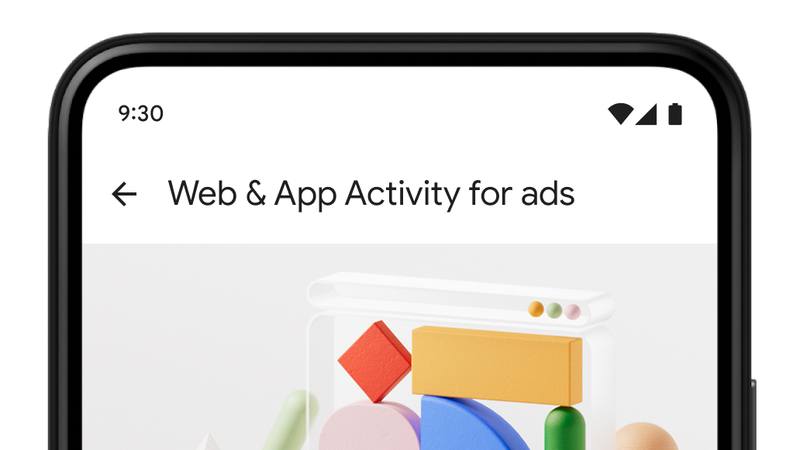Google Finally Lets You Turn off Targeted Ads Without Breaking Its Apps

For years, Google has offered users a master privacy setting which controls a major chunk of the data collected about you, but using it came with an enormous drawback: you had to give up a variety of useful features across the company’s services. Today, that’s changing. In a major revamp of its settings, Google will let you fine tune how data gets used for targeted ads without breaking the apps you use everyday.
It used to be that the only way to prevent Google from using your data for targeted ads was turning off personalized ads across your whole account, or disabling specific kinds of data using a couple of settings, including Web & App Activity and YouTube History. Those two settings control whether Google collects certain details about what you do on its platform (you can see some of that data here). Turning off the controls meant Google wouldn’t use the data for ads, but it disabled some of the most useful features on services such as Maps, Search, and Google Assistant.
Read more
Thanks to a new set of controls, that’s no longer true. You can now leave Web & App Activity and YouTube History on, but drill into to adjust more specific settings to tell Google you don’t want the related data used for targeted ads.
The detail is tucked into an announcement about the rollout of a new hub for Google’s advertising settings called My Ad Center. “You can decide what types of your Google activity are used to show you ads, without impacting your experience with the utility of the product,” Jerry Dischler, vice president of ads at Google, wrote in a blog post.
That’s a major step in the direction of what experts call “usable privacy,” or data protection that’s easy to manage without breaking other parts of the internet.
If the majority of users went and used all of the most private options in Google’s settings, it would have a major impact on the company’s business, maybe even the economy as a whole. Apple’s rolled out new privacy settings over the last few years that cost Meta (aka Facebook) billions of dollars in revenue.
But it doesn’t seem likely that Google will be prompting users to adjust their settings as proactively as Apple has. Google does, after all, sell those targeted ads. Karin Hennessy, the lead product manager on Google’s privacy and trust team, declined to say how many people the company expects will adjust their privacy settings. Hennessy did share that 260 million million people visit the Web & App Activity settings every month, which seems like a big number until you consider that it’s just 6% of Google’s 4.3 billion users—and that’s just how many people are visiting the main Google privacy page. The number of people turning the settings off is probably lower. Google wants you to know that these settings are available, but it may not be in the company’s best interest for you to use them.
You’ll find the new controls in My Ad Center, which starts rolling out to users this week. It primarily serves as a hub for Google’s existing ad controls, but you’ll find some expanded options, new tools, and a number of other updates.
When you open My Ad Center, you’ll be able to fine tune whether you see ads related to certain subjects or advertisers. You could say you don’t want to see ads about the energy industry, or tell Google you want to avoid Shell Oil specifically, for example. You’ll also be able to view ads and advertisers that you’ve seen recently, and see all the ads that specific advertisers have run over the last thirty days.
Google also includes a way to toggle off ads on sensitive subjects such as alcohol, parenting, and weight loss. Unlike similar settings on Facebook and Instagram, though, you can’t tell Google you don’t want to see ads about politics.
Correction: 10/20/2022 3:03 ET: A previous version of this story incorrectly stated that the only way to turn off targeted adds was to turn off settings including Google’s Web & App Activity. We corrected the error above.
More from Gizmodo
Sign up for Gizmodo's Newsletter. For the latest news, Facebook, Twitter and Instagram.

